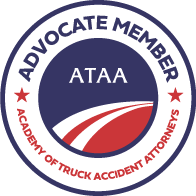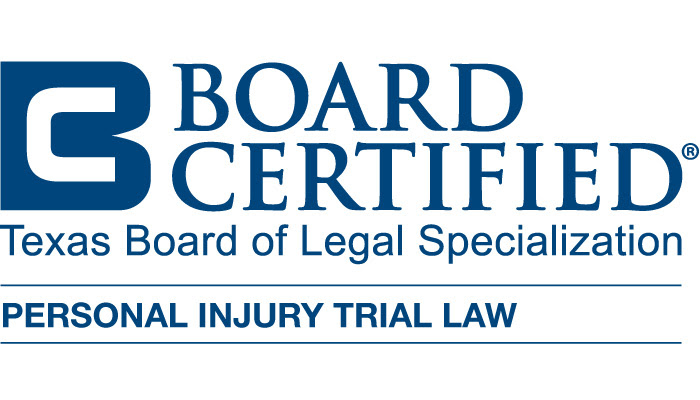Texas is known for its scorching summers, and nothing beats the heat like a fun day at a waterpark. Families flock to these parks for excitement and a refreshing way to cool down. Waterparks offer a wide variety of attractions, from wave pools and lazy rivers to towering water slides and splash zones for the little ones. However, as fun as these places can be, they also come with risks. Drowning accidents in waterparks are more common than most people realize, and when they happen, the aftermath can be devastating. In such cases, understanding liability becomes crucial.


When you visit a waterpark, you expect to have a safe and enjoyable experience. But accidents do happen, and in some unfortunate cases, people suffer serious injuries or even drown. When a drowning accident occurs at a waterpark, the big question is often: who is responsible? The issue of liability in these cases is not always straightforward. It depends on the specific circumstances of the accident, the role of the waterpark, and the actions of the individuals involved. This page will explore the subject of liability in Texas waterpark drowning accidents and answer some frequently asked questions to help you understand your legal options. At, Willumsen Law Firm, P.C., we are here to guide you through the legal process and help you navigate the complexities of your case.
What Makes Waterparks Dangerous?
Waterparks are designed to be thrilling, and that thrill often comes with a level of risk. While most waterparks take safety precautions, such as employing lifeguards and posting warning signs, accidents can still occur. Crowded pools, strong currents in lazy rivers, and fast-paced slides can all contribute to accidents. Some waterparks may not properly maintain their equipment, leading to dangerous conditions. For example, a water slide could have sharp edges, or a wave pool may not function correctly, creating waves that are too large or powerful for some swimmers to handle. These conditions can turn a fun day into a dangerous one.
Drowning is not always about a lack of swimming ability. In many cases, individuals who are good swimmers still find themselves in danger because of faulty equipment, lack of supervision, or unsafe conditions. For example, a child could be caught in a strong current or an adult could hit their head on the bottom of a pool after a slide, losing consciousness. In either scenario, drowning can happen quickly, and without the proper safeguards in place, tragedy can follow.
My focus is to give a voice to families who have suffered a wrongful death or a serious injury to a family member caused by an 18-Wheeler, commercial truck, or a drunk driver. Contact us today, we can help you.Helping Injury Victims for Over 25 Years
Who Can Be Held Liable for Drowning Accidents?
Determining who is liable for a drowning accident at a waterpark often depends on the specific details of the incident. Waterparks are responsible for providing a safe environment for their guests, and when they fail to do so, they may be held liable for any injuries or fatalities that occur as a result. This could include situations where a waterpark did not have enough lifeguards on duty, failed to maintain the equipment properly, or neglected to provide adequate warning signs about the dangers of certain attractions.
If a waterpark is found to have been negligent, they could be held accountable for damages. Negligence means that the waterpark failed to act in a reasonable way to protect its guests. For example, if a lifeguard on duty was not paying attention when the drowning occurred, or if a slide malfunctioned and caused someone to lose consciousness in the water, the park might be considered negligent.
Sometimes, individuals who are responsible for overseeing the safety of the park may also be held liable. This could include employees who were not trained properly or supervisors who did not ensure that safety protocols were being followed. In some cases, third-party contractors, such as the manufacturers of waterpark equipment, might also be held responsible if faulty design or manufacturing contributed to the accident.
What Are Common Injuries in Waterpark Drowning Accidents?
Drowning accidents are not always fatal, but they often result in serious injuries. When someone is submerged in water for too long without oxygen, it can lead to permanent brain damage. This can result in long-term disabilities, such as memory loss, speech problems, or difficulty with motor skills. Other injuries that can occur include broken bones, especially if the person was injured by falling from a slide or hitting the pool floor, or spinal cord injuries that can lead to paralysis. In the most tragic cases, drowning can result in death.
Even when a drowning accident does not result in a fatality, the emotional toll on the victim and their family can be overwhelming. The costs of medical treatment and rehabilitation can also be substantial. If the accident was caused by the negligence of the waterpark, families may be able to seek compensation for these costs, as well as for the pain and suffering they have endured.
What Should You Do If You or a Loved One Was Involved in a Waterpark Drowning Accident?
If you or someone you love has been involved in a drowning accident at a Texas waterpark, it is essential to take certain steps right away to protect your rights. First, it is important to seek medical attention immediately. Even if the injuries do not seem serious at first, it is crucial to be evaluated by a healthcare professional. Drowning-related injuries, especially brain damage, may not show symptoms right away.
Next, it is important to document everything related to the accident. This includes taking photos of the scene, writing down the names of any witnesses, and keeping any records related to the medical treatment received. If there is any video footage of the accident, such as from a security camera, make sure to request a copy. This documentation can be vital in proving liability later on.
Finally, it is essential to contact an attorney who has experience with waterpark accidents and drowning cases. Navigating the legal process on your own can be overwhelming, especially if you are dealing with injuries or grief. A knowledgeable attorney can guide you through the process, ensuring that your rights are protected and that you receive the compensation you are entitled to.
Related Videos
Choosing a Personal Injury Attorney
Types of Compensation in a Truck Accident Claim
How Can Waterparks Prevent Drowning Accidents?
Waterparks can take several steps to reduce the risk of drowning accidents. First and foremost, having a sufficient number of well-trained lifeguards on duty is essential. Lifeguards need to be alert and focused at all times, especially in high-risk areas such as wave pools and water slides. Waterparks should also conduct regular inspections of their equipment to ensure that everything is in good working order. Any equipment that poses a danger to guests should be repaired or replaced immediately.
Clear signage is also important. Waterparks should post visible signs warning guests of the risks associated with certain attractions, especially for those who are not strong swimmers. These signs should be placed in locations where guests can easily see them before entering the water or getting on a slide. Additionally, waterparks can implement strict rules about who can enter certain areas, such as requiring life vests for younger children or limiting the number of people allowed in wave pools at one time.
Education plays a key role in preventing accidents. Waterparks can provide information to guests about water safety, including how to recognize the signs of drowning and what to do in an emergency. By taking these steps, waterparks can help reduce the risk of tragic accidents and provide a safer environment for their visitors.
Drowning accidents in Texas waterparks are tragic and often preventable. When an accident occurs due to negligence, it is important to hold the responsible parties accountable. If you or a loved one has been involved in a drowning accident at a waterpark, understanding your rights and options is the first step in seeking justice. Recovering from such an experience is difficult, but with the right support, you can find a path forward.
At Willumsen Law Firm, P.C., we are committed to helping victims and their families navigate the legal process following a waterpark drowning accident. Our team understands the complexities of these cases and is here to fight for the justice you deserve. If you need assistance, contact us today to schedule a consultation. Let us help you take the next step toward healing.



